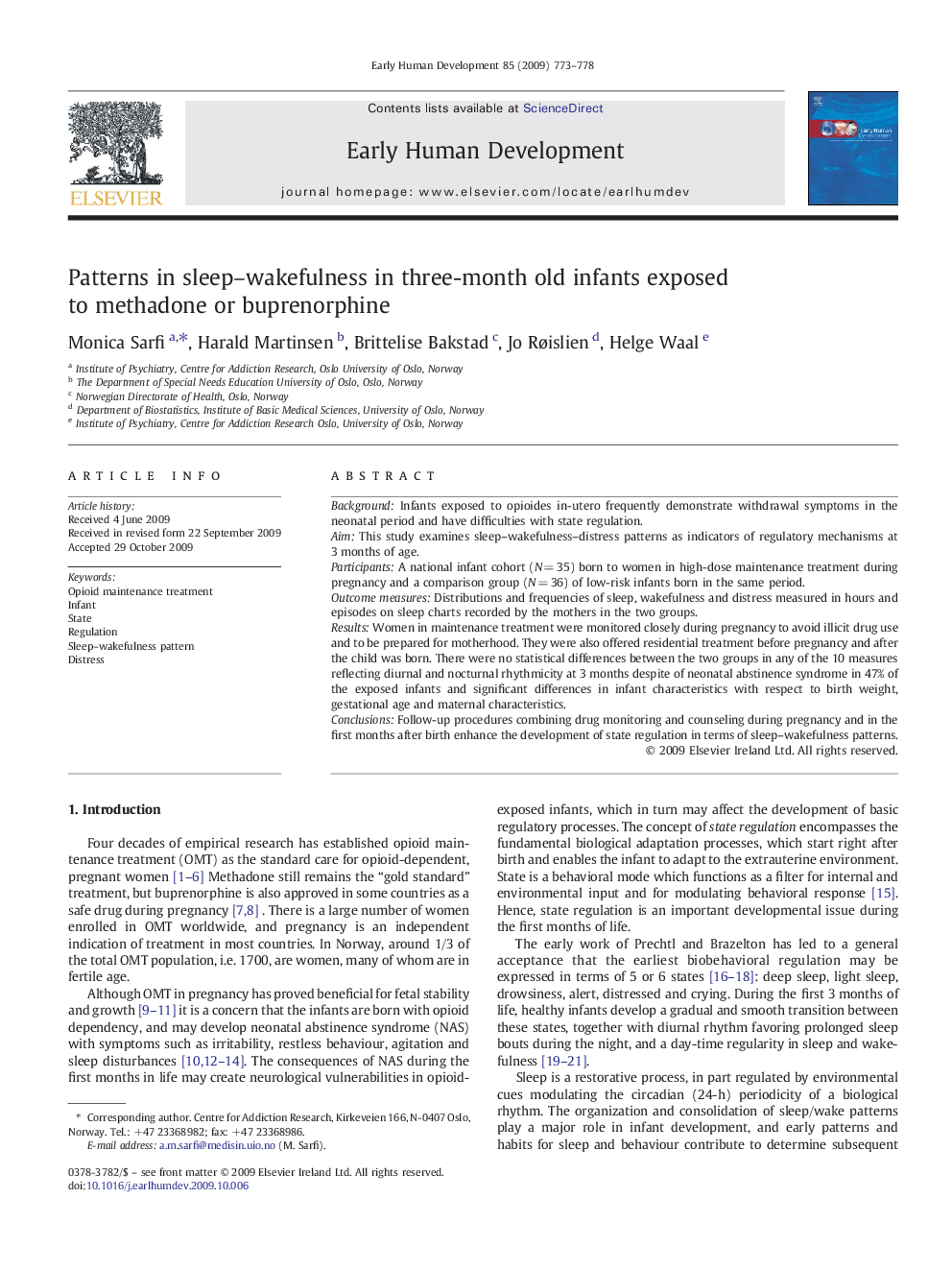| Article ID | Journal | Published Year | Pages | File Type |
|---|---|---|---|---|
| 3917913 | Early Human Development | 2009 | 6 Pages |
BackgroundInfants exposed to opioides in-utero frequently demonstrate withdrawal symptoms in the neonatal period and have difficulties with state regulation.AimThis study examines sleep–wakefulness–distress patterns as indicators of regulatory mechanisms at 3 months of age.ParticipantsA national infant cohort (N = 35) born to women in high-dose maintenance treatment during pregnancy and a comparison group (N = 36) of low-risk infants born in the same period.Outcome measuresDistributions and frequencies of sleep, wakefulness and distress measured in hours and episodes on sleep charts recorded by the mothers in the two groups.ResultsWomen in maintenance treatment were monitored closely during pregnancy to avoid illicit drug use and to be prepared for motherhood. They were also offered residential treatment before pregnancy and after the child was born. There were no statistical differences between the two groups in any of the 10 measures reflecting diurnal and nocturnal rhythmicity at 3 months despite of neonatal abstinence syndrome in 47% of the exposed infants and significant differences in infant characteristics with respect to birth weight, gestational age and maternal characteristics.ConclusionsFollow-up procedures combining drug monitoring and counseling during pregnancy and in the first months after birth enhance the development of state regulation in terms of sleep–wakefulness patterns.
